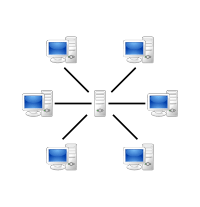
URL Switching is a technology that allows companies to flexibly manage Web content by managing Hypertext Transfer Protocol (HTTP) request traffic based on the requested HTTP headers. URL switching is sometimes referred to as layer 7 content switching.
URL switching allows HTTP requests from clients to be directed to Web servers and caches based on the value of substrings in the HTTP headers. For example, requests for static Web pages can be switched to a Web caching server, and requests for dynamic content can be switched to a Web application server. Other criteria that can be used to switch requests include the size of the file requested, whether the content is multimedia in form, and so on. Once the switch determines the best server to service the request, it binds the request to that server for the duration of the session. Cookies can also be used in Uniform Resource Locators (URLs) to switch requests to specific servers. URL switching also provides a way to load balance Web servers that is more flexible than the currently deployed Internet Protocol (IP) switching technologies. A leading vendor in URL switching devices is Alteon WebSystems.